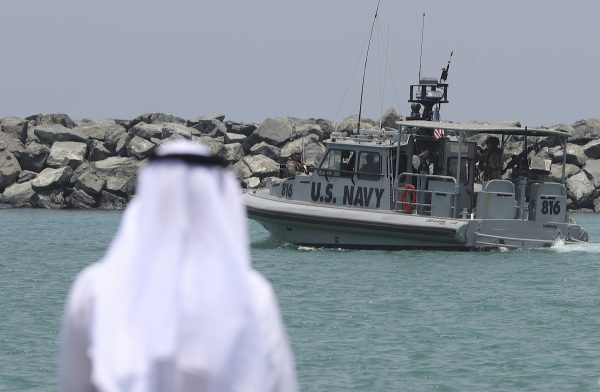The United States will deploy marines and two amphibious warships to the Middle East in response to Iranian forces’ recent attempts to seize commercial ships in the region, the Pentagon said on July 20.
Defense Secretary Lloyd Austin has ordered the deployment of a Marine Expeditionary Unit consisting of USS Bataan, USS Carter Hall, and its personnel to the U.S. Central Command (CENTCOM) area of responsibility.
“We will continue to work with like-minded allies and partners who are committed to the free flow of commerce to take appropriate, coordinated actions against threats to this fundamental principle of the rules-based international order,” the Pentagon stated.
The U.S. Defense Department had earlier sent F-35 and F-16 fighter jets, as well as the guided-missile destroyer USS Thomas Hudner, to the Strait of Hormuz and the Gulf of Oman to bolster security in the region.
CENTCOM commander Gen. Michael “Erik” Kurilla said the additional forces will help to further safeguard the free flow of international commerce, uphold the rules-based international order, and deter “Iranian destabilizing activities” in the region.
“U.S. Central Command is committed to defending freedom of navigation within our area of responsibility, which includes some of the most important waterways in the world,” Gen. Kurilla said in a statement.
Damage sustained by M/T Richmond Voyager after an Iranian naval vessel fired multiple long bursts of rounds during an attempt to unlawfully seize the commercial tanker, according to the U.S. Navy, is seen, in the Gulf of Oman, in this handout photo provided by U.S. Navy on July 5, 2023. (U.S. Naval Forces Central Command/U.S. 5th Fleet/Handout via Reuters)
These deployments came after the Iranian navy attempted to illegally seize two oil tankers in waters between Iran and Oman early this month.
The Iranian vessels, the U.S. Navy said, fired at one of the tankers as part of the second attempt; no damage or casualties were reported, officials said.
According to CENTCOM, Iran has attacked, seized, or attempted to seize nearly 20 internationally flagged merchant vessels navigating in its area of operations over the past two years.
Iran Isn’t Threatened by Anyone
Iranian Defense Minister Brig. Gen. Mohammad Reza Ashtiani said that his country had reached a level of power and capabilities that “no one can threaten,” calling Iran “a player in the region and the world.”
A U.S. Navy patrol boat carrying journalists to see damaged oil tankers leaves a U.S. Navy 5th Fleet base near Fujairah, United Arab Emirates, on June 19, 2019. (Kamran Jebreili/AP Photo)
“The United States seeks its own goals, but the Islamic Republic of Iran is at a stage of power and capability that no one can threaten it,” Mr. Ashtiani told reporters on July 19, according to Tehran Times.
When asked about the countries to which Iran primarily sells drones, Mr. Ashtiani answered, “We don’t focus on a particular country because we are a drone power in the world.”
Relations between the United States and Iran have been poor since the 1979 revolution and the subsequent regime change. Tensions have further escalated since the United States pulled out of Iran’s 2015 nuclear deal with other world powers.
Iran has attempted to resume its nuclear activities while claiming they are for peaceful purposes, and it has also provided drones to Russia for the war in Ukraine.
Washington pulled out of the Iran nuclear deal in 2018, with then-President Donald Trump announcing that it was “one of the worst and most one-sided transactions the United States has ever entered into.”
The deal, he argued, “enriched the Iranian regime and enabled its malign behavior, while at best delaying its ability to pursue nuclear weapons and allowing it to preserve nuclear research and development.”
Jack Phillips, Reuters, and the Associated Press contributed to this report.

 A U.S. Navy patrol boat carrying journalists to see damaged oil tankers leaves a U.S. Navy 5th Fleet base near Fujairah, United Arab Emirates, on June 19, 2019. (Kamran Jebreili/AP Photo)
A U.S. Navy patrol boat carrying journalists to see damaged oil tankers leaves a U.S. Navy 5th Fleet base near Fujairah, United Arab Emirates, on June 19, 2019. (Kamran Jebreili/AP Photo)